
|

|

|

|

|

Writing Responses to Open-Ended Questions
Review the Rubric with Students
Most teachers use rubrics to score student responses to open-ended questions. Make sure students understand the rubric so that they know exactly what they must provide to get the best score. Teachers use a variety of strategies to provide this training:
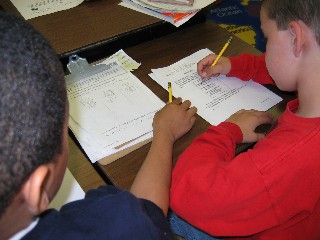
|
|
Use the Writing Process Approach
Students are accustomed to editing their first drafts in language arts, reworking their writing to craft a better response. Regularly include these practices in math class. After writing, students should use the rubric to examine their response and annotate, clarify or reorganize, as needed, to craft a tight response. Students should be encouraged to use words, pictures and/or numbers to capture their thinking process in these open-ended questions. They must also understand that there are many different ways to achieve a perfect score as long as they accurately show their thinking toward a correct answer.
|
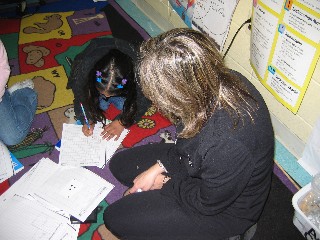
|
Provide Independent Practice

|
Students will complete open-ended problems in both classroom and state testing situations, most likely under timed conditions. Teachers should continue to use a combination of the writing process approach (to grow better math writers) and the independent response situation, in which students must apply good practices to producing their best responses under test conditions. A combination of these approaches, used throughout the school year, is the best instruction and preparation for state testing.
|
Mathwire Dr.Seuss Day Math Activities
|
Many schools celebrate the birthday of Theodor Geisel, better known as Dr. Seuss. Consider adding mathematical activities to these celebrations. One fish, two fish, red fish, blue fish is an especially good introduction to combinations. Use the Mathwire open-ended problems written to accompany this book. The problems may be used with older grades who enjoy hearing their childhood book read aloud. |

|
|
Mathwire St. Patrick's Day Math Activities

|
|
Featured Data Collection Activity: Cereal Toy Investigation

|
Data Collection (Small Sample): This simulation introduces students to the marketing strategy of packaging toys in cereal boxes to increase sales. In this activity, one of six different toys is packed in each box of cereal on the assembly line. Equal numbers of all six toys are available at all times on the shelves of grocery stores, but the toys are randomly distributed in those boxes. Students are asked to estimate how many boxes of cereal the average family would have to buy to get all six different toys. Students share estimates and their reasoning and these are recorded before the simulated data collection using one die to produce the outcome of getting six different toys. This is an important step in the activity so be sure to allow adequate time for students to discuss their predictions. Afterwards, students add data to the class results for analysis and discussion of this larger sample.
|
Online Cheerios Investigation SimulatorData Collection (Larger Sample): After students have completed the simulation, allow time for students to collect data for a larger sample by using the Mathwire Online Cheerios Investigation Simulator. Students click on the Next Box tab to "buy" boxes of cereal and see what prizes they have gotten in each box. The applet lists how many boxes have been bought and how many different toys the student currently has. Once the student gets the sixth different toy, he/she should copy down the total number of cereal boxes and add that to the class data for analysis. After recording the total boxes for that trial, students click the Reset box to clear the data and run another trial.
|
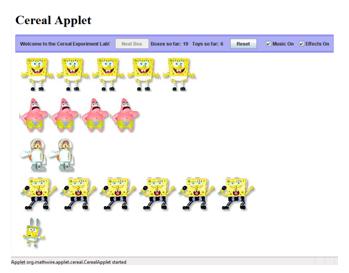
|


Strategy of the Month: Organizing Data
There are many different ways to organize data: graphs (bar, line, circle, glyph, etc.), line plot, stem-and-leaf plot, table, list, picture, etc. Be sure to meaningfully plan opportunities for students to use these different methods in problem-solving exercises. As part of class discussion, display different student responses on the overhead or whiteboard, commenting on how one student used a table and another used a graph, etc. At times, teachers might encourage students to use a table or draw a graph, etc. so that they demonstrate proficiency in using the different approaches.
- See Mathwire
 Problem Solving Resources for open-ended problems organized by grade levels and math standards.
Problem Solving Resources for open-ended problems organized by grade levels and math standards.
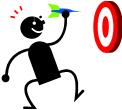
Tip of the Month: Have Students Write Original Math Problems

Students use higher-order thinking skills when they write original problems similar to those they have done in class. Have students proof and solve each other's problems before publishing them on the computer, along with the author's name and the date. These problems may be used as do-nows, homework assignments, or placed in the math center. Teachers who regularly include student writing find that students are highly motivated to solve problems created by their peers AND teachers develop a larger bank of appropriate word problems over time.
Mathwire Blog
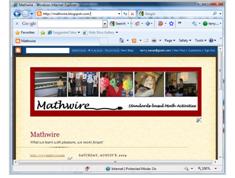
Don't miss the new Mathwire Blog for the latest updates on Mathwire! The Mathwire blog will feature new activities as they are added to the Mathwire collection and it will also spotlight classic Mathwire activities, adding suggestions for classroom implementation and/or modifications to best meet the needs of varied students in a classroom.
Best of all, the Mathwire Blog format allows users to comment on the activities and add their own ideas to the mix. This should benefit all of us as we try to engage students in learning mathematics.
Check out the new  Mathwire Blog and be one of the first to become an active contributor to the Mathwire family. The Mathwire Blog replaces the old Mathwire subscription e-mail lists so that you are constantly up-to-date on Mathwire happenings.
Mathwire Blog and be one of the first to become an active contributor to the Mathwire family. The Mathwire Blog replaces the old Mathwire subscription e-mail lists so that you are constantly up-to-date on Mathwire happenings.
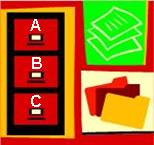
Mathwire Search Options
New to Mathwire.com? There are several ways to search the site for activities by Math Standard, Math Topic, or using an alphabetical search.
- See
 Searching the Mathwire.com Site for a thorough explanation of these search options.
Searching the Mathwire.com Site for a thorough explanation of these search options.
About Mathwire.com
Mathwire.com is designed to provide activities and appropriate worksheets for teachers to use in their classrooms. All activities and worksheets support the constructivist approach to learning mathematics and the NCTM Standards.
Activities: The activities on this site were developed by Terry Kawas and the teachers in districts where she has worked as a math consultant and coach or with students she has taught in college math-methods courses. The activities are classroom-tested by teachers and appropriate modifications have been made to reflect this field-testing. These activities are posted online in an effort to share quality activities and routines within the mathematics community.
Read A Note from Terry and see what users are saying about Mathwire.
Terms of Use: Teachers are welcome to download any of the activities for free use in their classrooms. No activities may be copied for use on other websites or included in commercial products without permission in writing from Terry Kawas, webmaster. Contact Terry Kawas

